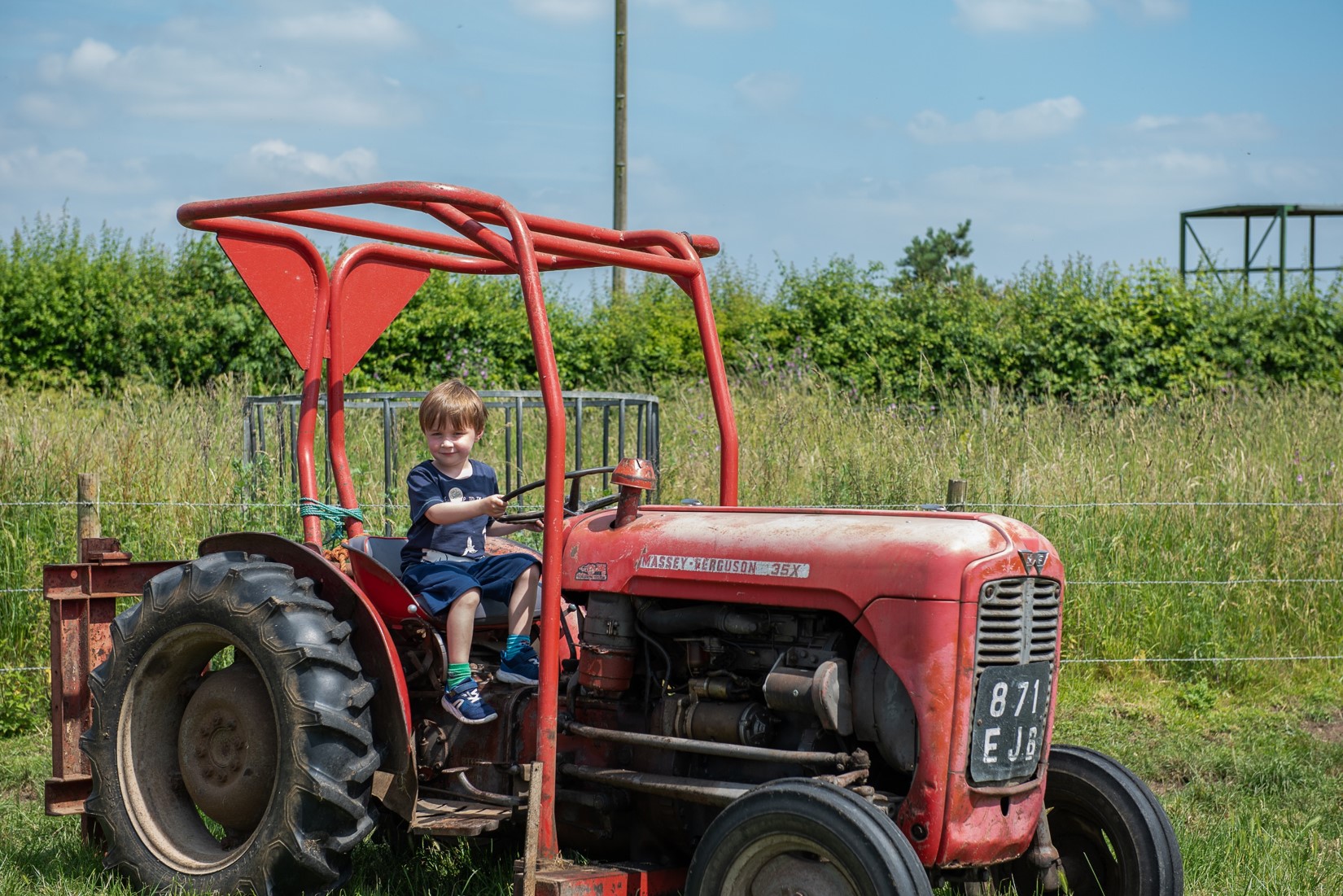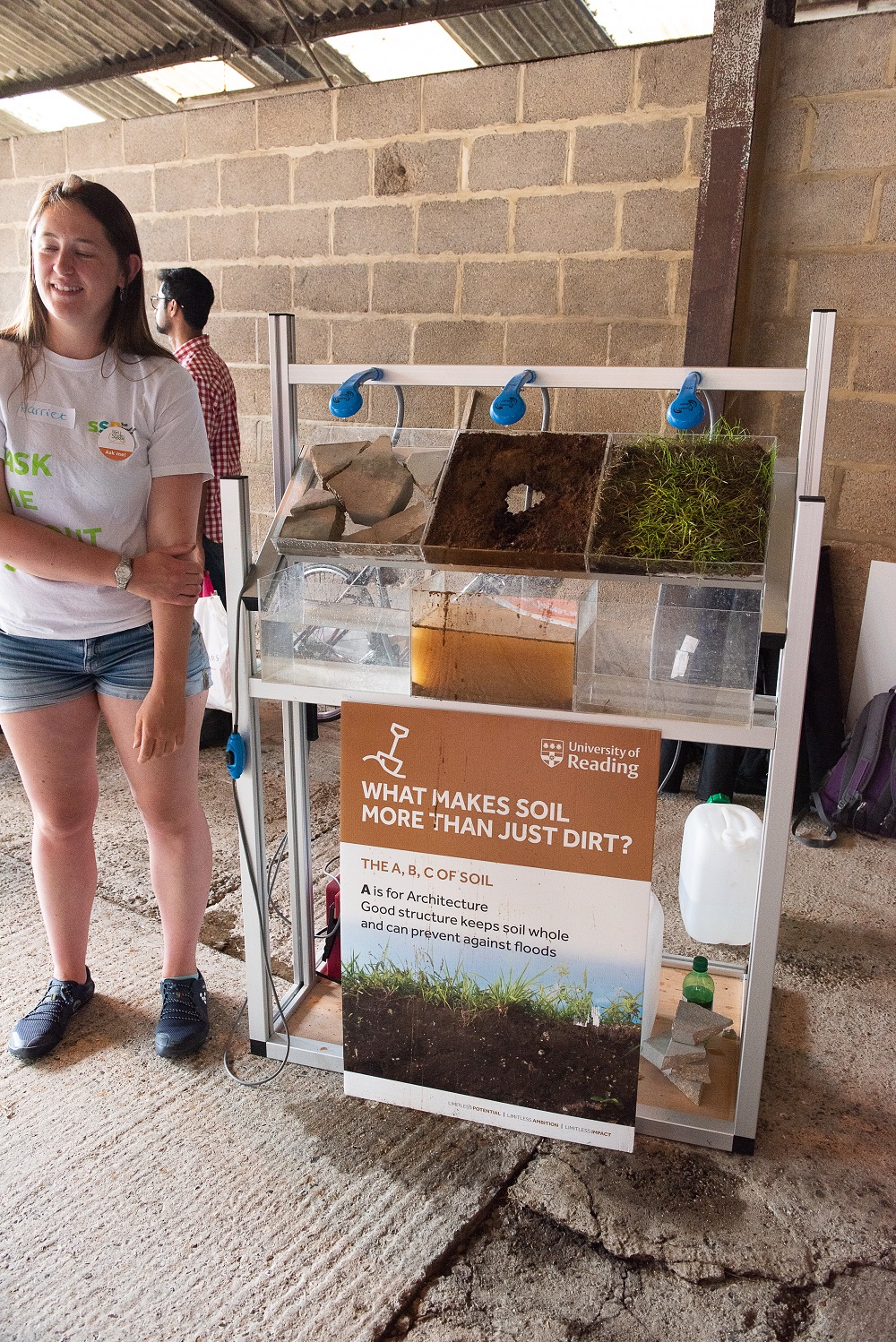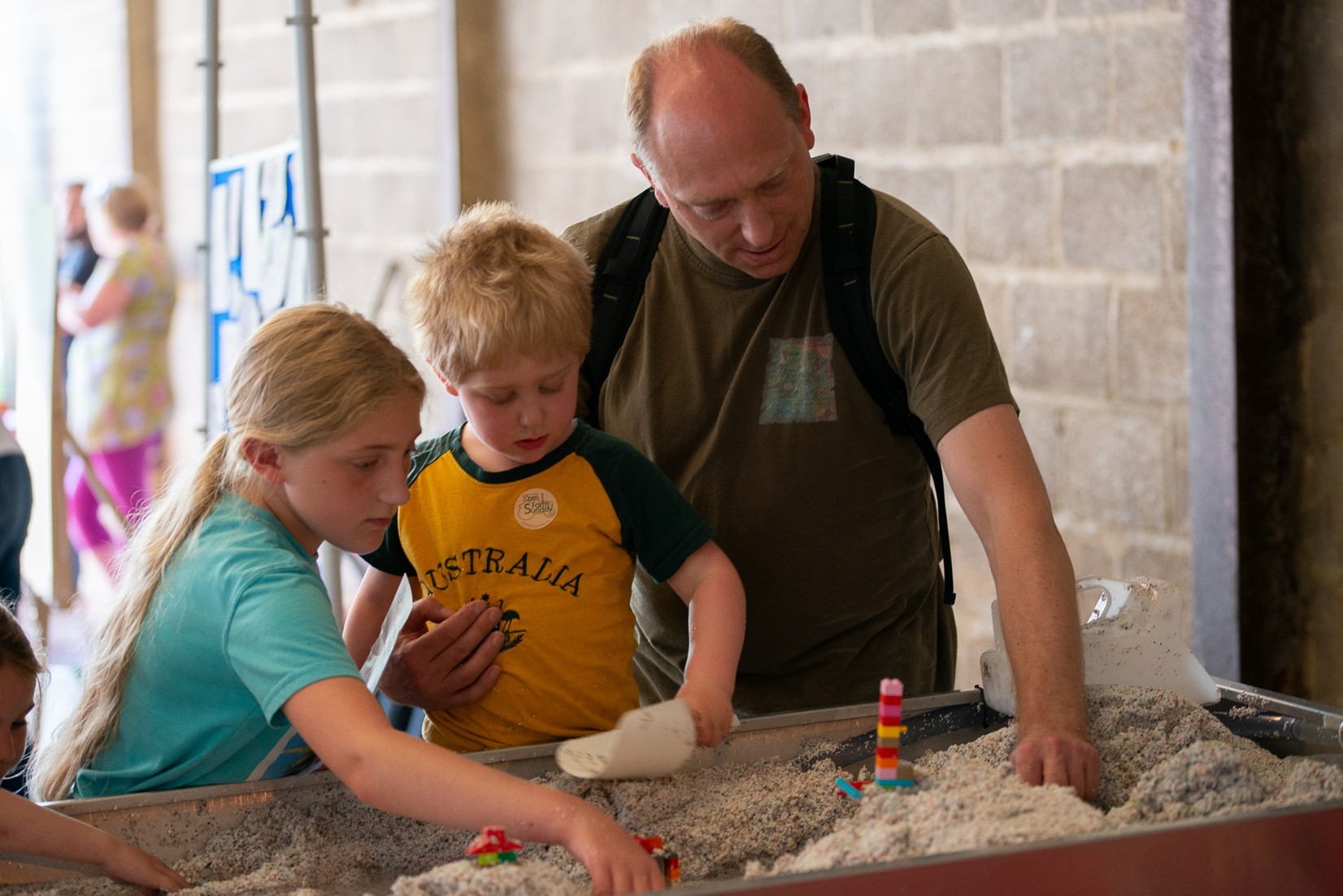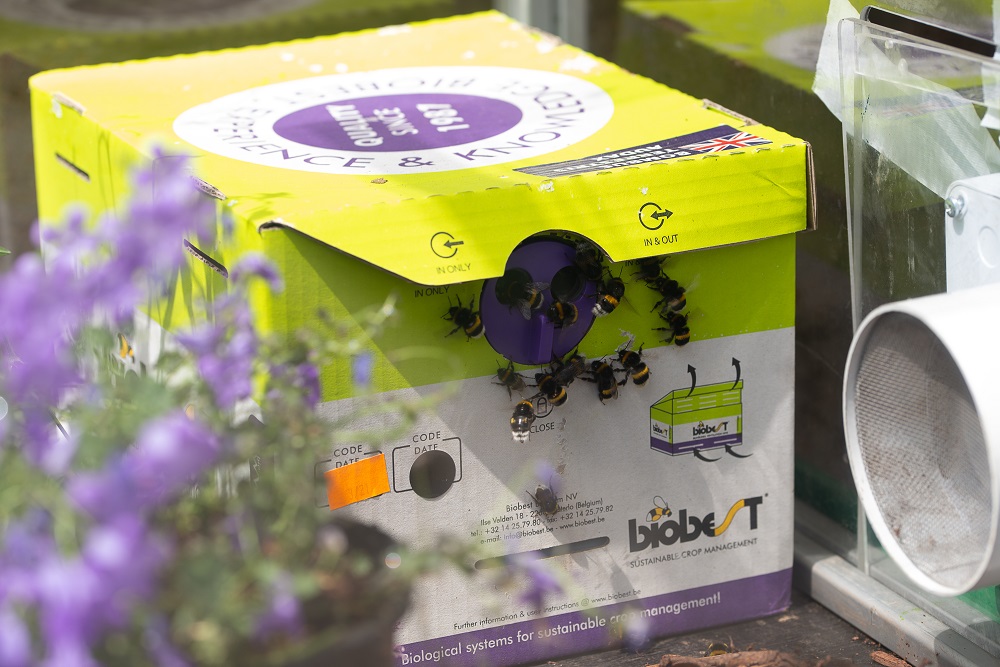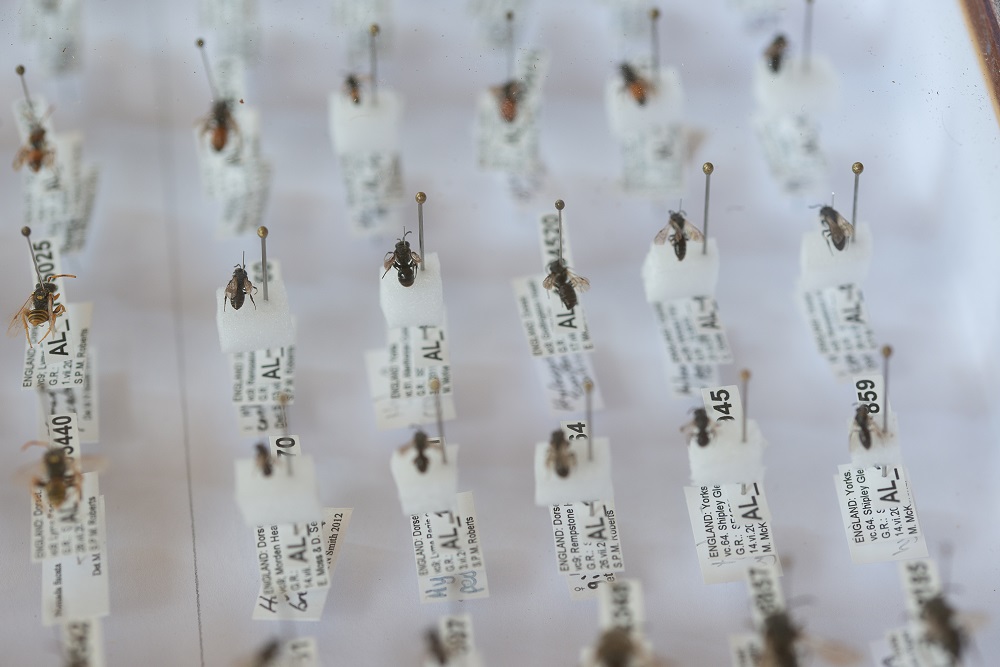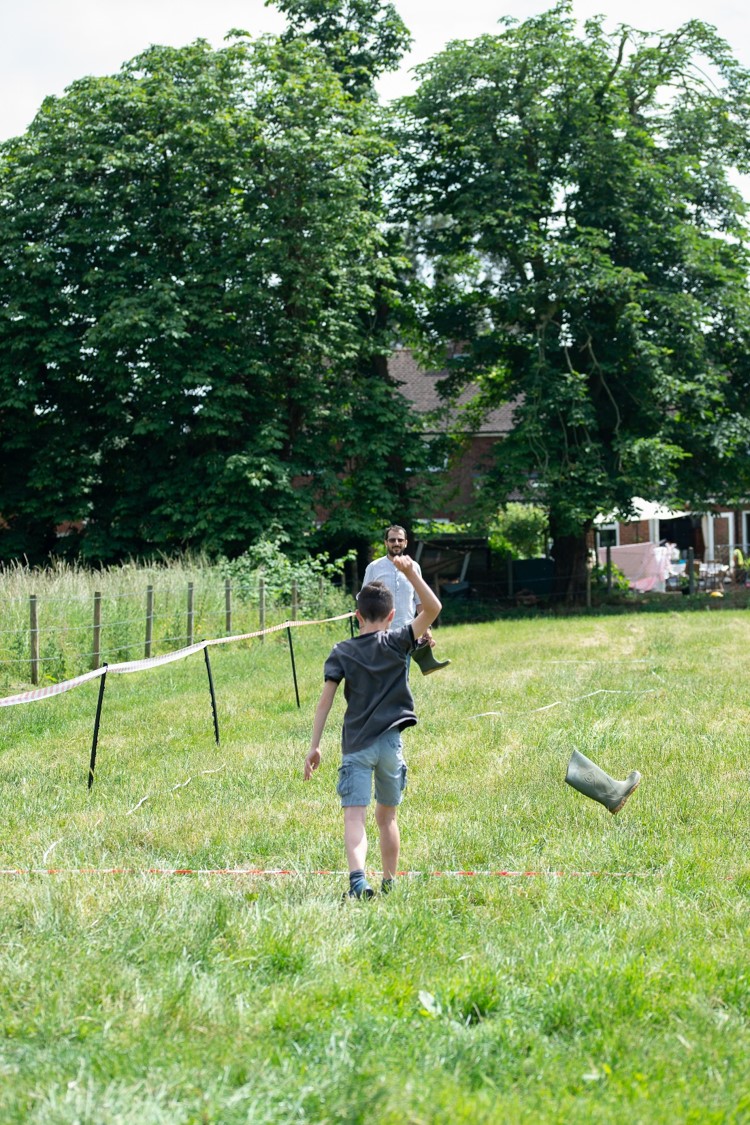Our farm at Sonning recently threw open its five-bar gates to the public as part of the national Open Farm Sunday event. Anna Thompson from the Centre for Dairy Research talks us through some pictures from the day.
We welcomed 280 guests as part of the national ‘Open Farm Sunday’ initiative on 10 June. The day was a great success with many visitors praising the opportunity to meet the our scientists face-to-face. The open day offered visitors the chance to learn more about the University’s farms: Sonning farm, with its Crop Research Unit and young dairy cows, and Shinfield farm with its 550-strong herd and the Centre for Dairy Research where research is carried out into sustainable dairy cow nutrition, milk composition, and environmental impacts of milk and meat production.
Reading scientists came out in force to enthuse and engage the public with their research. Here, Dr Lindsay Todman from the university’s Soil Security Programme is showing a young visitor how the characteristics of soil can affect water infiltration.
Visitors could also explore displays showing the ABC – Architecture, Biology and Chemistry – of soil. Good soil architecture, or soil structure, helps to prevent floods; biology refers to the life in soil – the billions of microorganisms present in it which help crops to grow; and chemistry to its all-important acidity or alkalinity.
Guests were able to meet the dairy calves that are raised on site as part of a high welfare system. James Lamburn, farms manager, demonstrated how fast calves grow by comparing a three and seven-week-old calf to the weight of a child and their parent!
Some researchers brought demonstration stations to help younger visitors understand how farmers help to shape, maintain, and protect the environment. Pictured here is the ‘Em-River‘ miniature model of a river. Dr Jo Clarke and Dr Arnaud Duranel from the Loddon Observatory the model show visitors how different types of building and engineering works can change river flow dynamics.
Tractor rides around the farm proved a particular hit with the visitors. The route included a short walk through the crops research unit where researchers from the Centre for Dairy Research and colleagues from the organic research centre explained the science behind sustainable crop rotations and encouraging biodiversity in arable systems.
Reading’s research on bees and other pollinating insects was also well represented. Dr Duncan Coston brought along ‘The Bumblarium’ – essentially a bee hive in a perspex cube – and children found out about some of the 250 bee species that live in the UK and how to construct their own bee hotels. Also on hand was Dr Jake Bishop, who spoke about his work at the Crops Research Unit considering different bean varieties and how they can be used to help pollinators.
And of course, no visit to the farm would be complete without a traditional welly throwing contest! Well done to the winner – who managed an impressive 25 metres!

